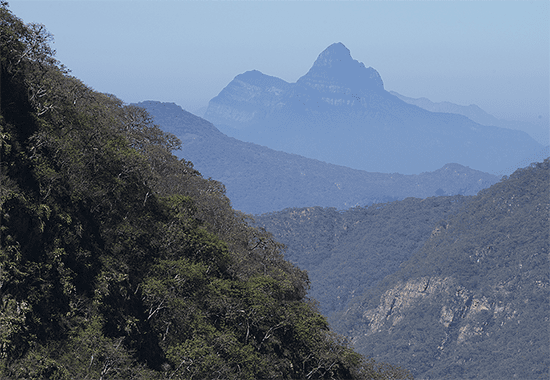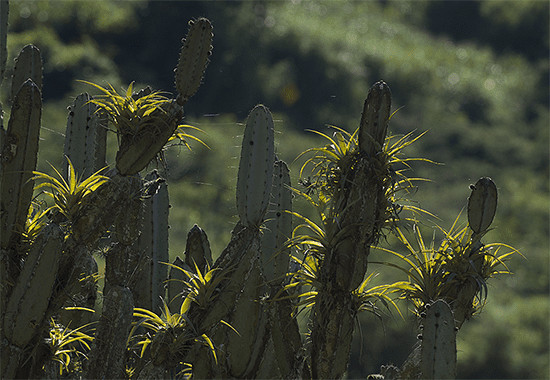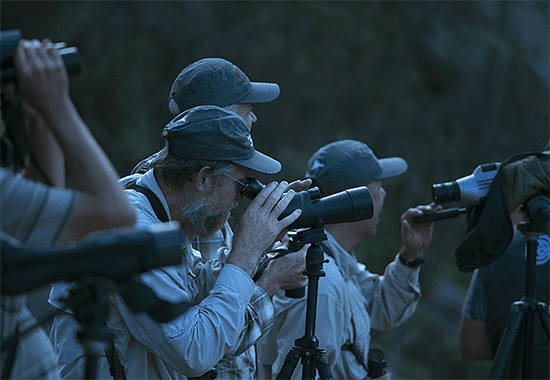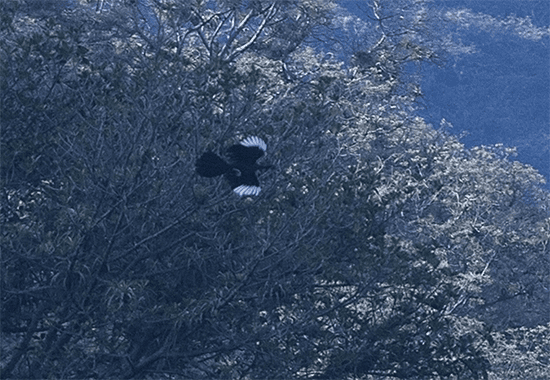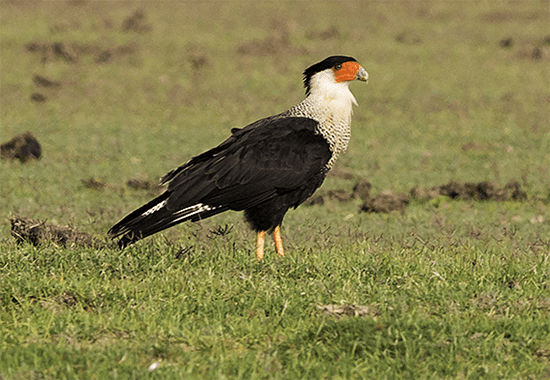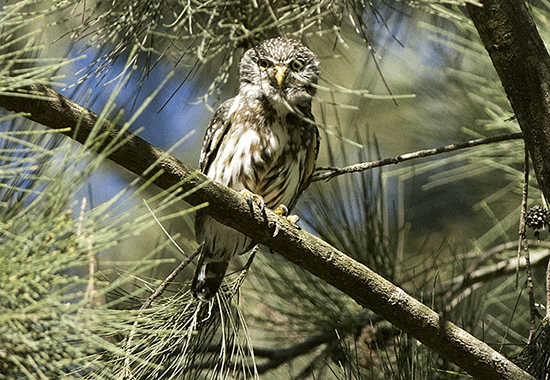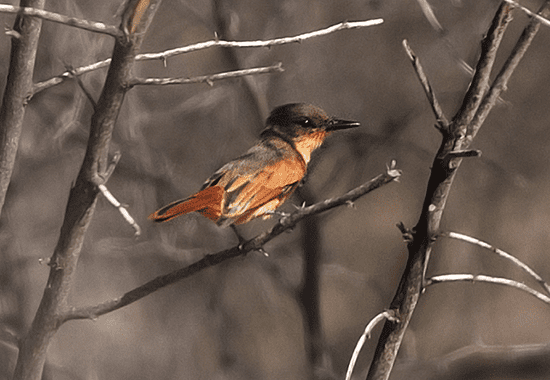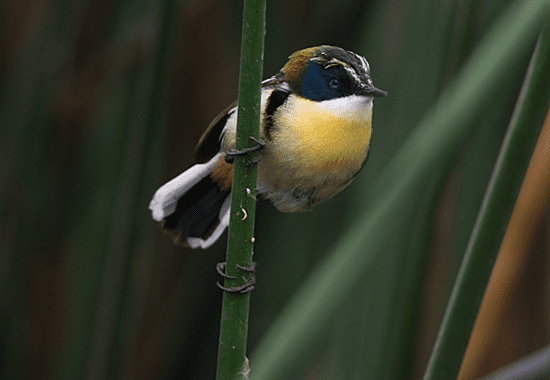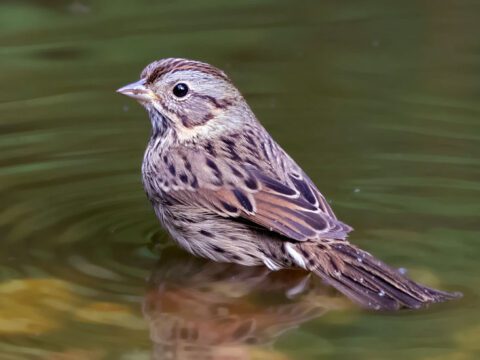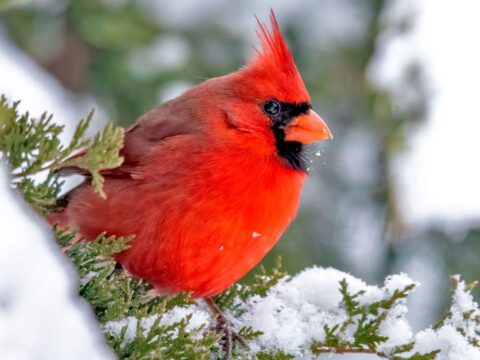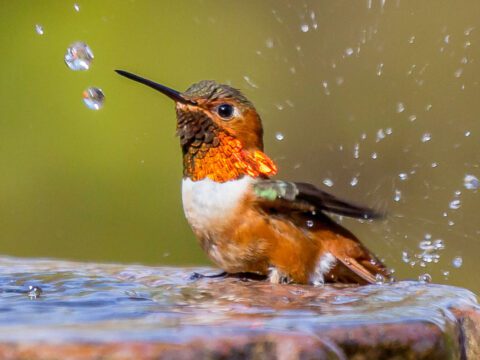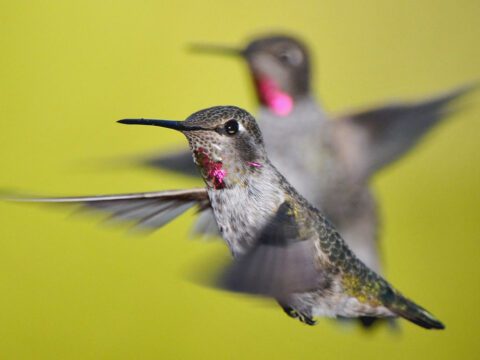World Birding Rally: In the Valley of the Endangered, Endemic White-winged Guan
By Hugh Powell May 14, 2014
The Andes mountains are immense. In northwest Peru, dry deciduous forest clings to the slopes of these lower peaks. 
The climate here is dry; trees share space on the rocky slopes with cactus. 
Members of Surbound Expeditions aim their scopes at the highlight of the day. 
The spectacular White-winged Guan was thought extinct for a century before it was rediscovered in the late 1970s. 
Always outrageous-looking Crested Caracaras are common in the dry, open country. 
A Peruvian Pygmy-Owl pauses between hoots to look at us through the foliage around its perch. 
The dry deciduous forest of the Tumbes region is home to many endemic species, including this Rufous Flycatcher, a relative of the Great Crested Flycatcher. 
The teams scanned wetlands and reed beds for this delightful bird, the Many-colored Rush-Tyrant.
I’m visiting northern Peru to attend the World Birding Rally, an eight-day competition that sets four teams of bird watchers on a 900-mile dash across northern Peru. They’ll travel from the Pacific Ocean, across the northern Andes and into the foothills above the Amazon basin. Cumulatively, the teams will likely see nearly 900 species of birds during the Rally as they drive from sandy desert scrub up to cloud forest and down into rainforest. The Rally celebrates Peru’s bird diversity (at some 1,800 species, second highest in the world, after Colombia)—as well as its uniqueness, as evidenced by the country’s roughly 100 endemic species.
The rally officially started this morning with one of those endemics, the spectacular White-winged Guan, whose story is both improbable and hopeful. It was considered extinct for a century and then rediscovered in spectacular fashion. In the 1970s, a Peruvian named Gustavo del Solar and a U.S. biologist named John O’Neill decided, despite the birds’ long absence from the record, to look for them. They focused on the fragments of dry forest that still clung to the steep canyons of the lower Andes in Peru’s northwest—and soon after they began looking, they found these big, glossy black birds. The rediscovery, and the species itself, were so spectacular that they prompted an announcement on the nightly news from Walter Cronkite himself.
One early threat to the guan was hunting, but in the time since it disappeared, in the nineteenth century, habitat loss had taken its toll as well. Much of the dry forest along the coastal plain was lost, and even in the foothill canyons, people cleared hillsides as far as was practical to make charcoal and to plant fields of rice, beans, corn, and other crops. As I saw this morning in the reserve of Laquipampa, the only remaining hill forest is on the steep upper slopes of the rocky ridges that guard the valley.
The sun was streaming down the valley, gilding the fringes of foliage on the ridgetops but leaving the nearly sheer rock faces in shadow. I was amazed at how far the road wound along, and also at how many schoolchildren in uniforms were coming down the road for class. The valley narrowed and the boulders in the riverbed became smooth and massive. We stopped and looked back down the valley just in time to see a couple of White-winged Guans hunched in a treetop. As I watched, one launched into flight. It spread its round wings until they almost seemed circular and their neat white wing patches shone. It flared its long tail and the bird didn’t take any wingbeats for one long swoop of 100, then 200 yards, eventually making a neat spiral back down to return to the ridge it had launched from. At that distance, it looked a little like an enormous Phainopepla.
Laquipampa is the best place to see this critically endangered species, of which only about 250 remain. Curious about Laquipampa’s appeal, I asked Fernando Angulo, a Peruvian biologist who has worked with the birds for nearly 15 years and is also participating in the Rally. It’s because the people are happy to let the guans live alongside them, he said. The people grow enough food and keep enough livestock that there is little incentive to hunt the birds. What little habitat that remains for the guan is on slopes that are difficult to walk on, much less farm on, so the problem of further habitat loss is not a big one.
Along the road from Laquipampa I was stopped by a young boy, perhaps 10, wearing a red soccer jersey. He was shy but, he said, he really wanted to hear somebody speaking English. We chatted, and eventually I mentioned guans. Has he seen them? Yes, I’ve seen them, he said, gesturing down the road toward where we had just seen them. As we talked a bit more (ably translated by the Rally’s photographer, Alfredo Fernandez), it was clear he didn’t realize how range-restricted or endangered the species is. I didn’t try to tell him about the rediscovery or about Walter Cronkite. But I did tell him that all the English-speaking people he saw today were here because they wanted to see the guan. I wished I had thanked him and his family for doing their part in saving this remarkable bird.
On that day, pretty much everyone in the Rally got a good look at the guans—and I’ll remember that single flawless spinning descent over the valley in the sunlight. It was a great way to start the rally’s first morning. Stay tuned for full details of Day 1 and Day 2 of the rally, coming to the Nature Travel Network soon.
More about the Rally:
- Be Careful What You Wish For: A Punter’s Guide to the World Birding Rally – 10,000 Birds
- World Birding Rally: In Peru’s Cloud Forest, Royal Sunangel Looks as Impressive as It Sounds
- World Birding Rally: The Strange Endemics of the Tumbesian Region – Nature Travel Network
- World Birding Rally: Scads of Storm-Petrels on Pre-Rally Pelagic – Nature Travel Network
- Follow the World Birding Rally on Facebook for updates on the competition
- Meet the teams: The World Birding Rally teams are composed of tour leaders from four companies: Birding Ecotours (South Africa, led by Duan Biggs); Wings/Sunbird (U.K./U.S., led by Rich Hoyer); Surbound Expeditions (Florida, led by Alfredo Begazo); and Field Guides (Texas, led by Rose Ann Rowlett).
(Images by Alfredo Fernandez, http://alfredofernandez.ca/)

All About Birds
is a free resource
Available for everyone,
funded by donors like you
American Kestrel by Blair Dudeck / Macaulay Library
